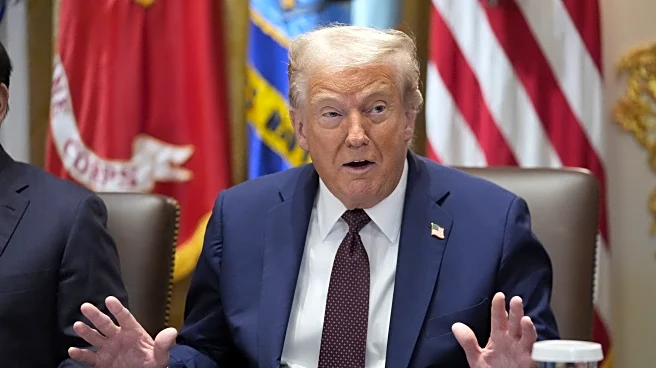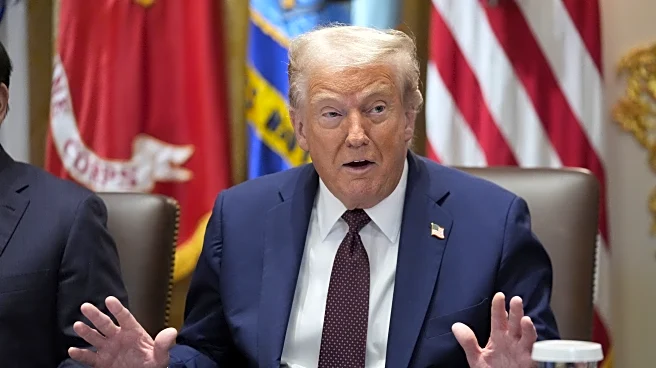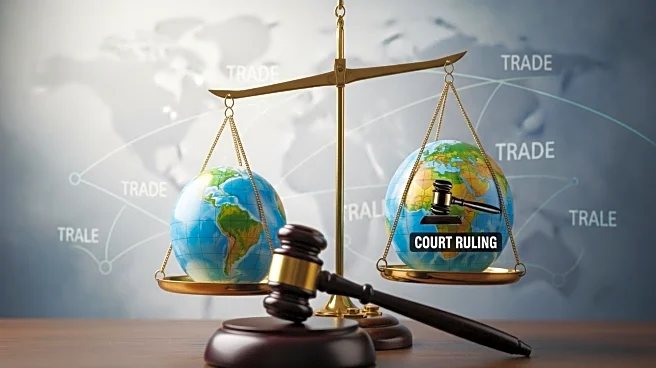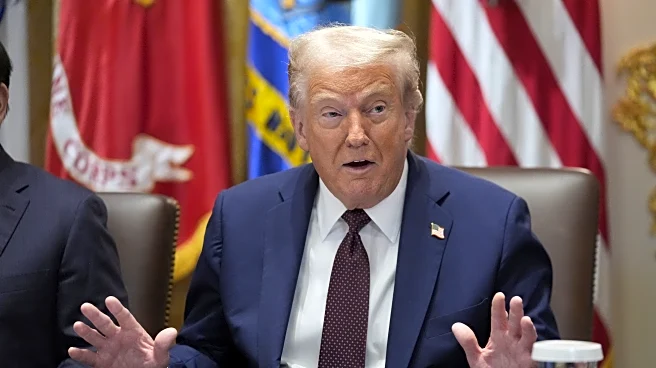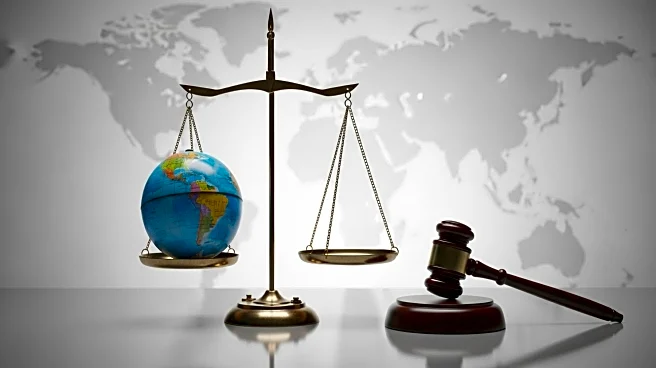What's Happening?
A federal appeals court has upheld a lower court's decision that invalidated the Trump administration's nation-by-nation retaliatory tariffs. The court ruled that these tariffs lack a legal basis under the International Emergency Economic Powers Act (IEEPA), which the administration used to justify its tariff announcements. Enacted in 1977, IEEPA was designed to limit presidential power in imposing trade measures without Congressional approval, allowing certain actions during declared emergencies. However, the court found that IEEPA does not grant the president tariff powers, as the statute does not mention tariffs or provide procedural safeguards for imposing them. The Court of International Trade in New York initially found the tariffs unjustified, and the U.S. Court of Appeals for the Federal Circuit confirmed this, stating that Congress did not delegate tariff authority to the president under IEEPA.
Why It's Important?
This ruling has significant implications for U.S. trade policy and the balance of power between the executive and legislative branches. By invalidating the tariffs, the court reinforces Congressional authority over trade matters, potentially limiting the executive branch's ability to unilaterally impose tariffs. This decision could affect U.S. relations with trading partners and impact industries reliant on international trade. Businesses affected by these tariffs may see changes in their operational costs and market strategies. The ruling also sets a precedent for how IEEPA can be interpreted in future cases, potentially influencing how future administrations approach trade policy.
What's Next?
The appeals court has stayed its ruling to allow for an appeal to the Supreme Court, which is likely given the administration's history of seeking emergency stays. President Trump has expressed hope that the Supreme Court will overturn the decision, emphasizing the importance of tariffs in his economic strategy. The outcome of this appeal could have lasting effects on the administration's trade policies and the broader U.S. economic landscape. Stakeholders, including businesses and trade partners, will be closely monitoring the situation as it develops.




